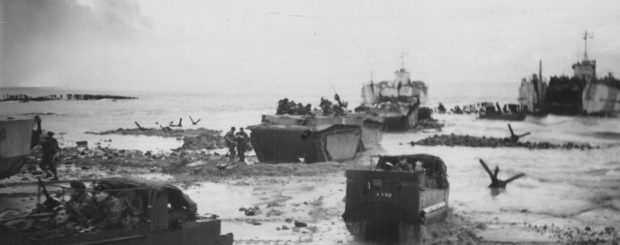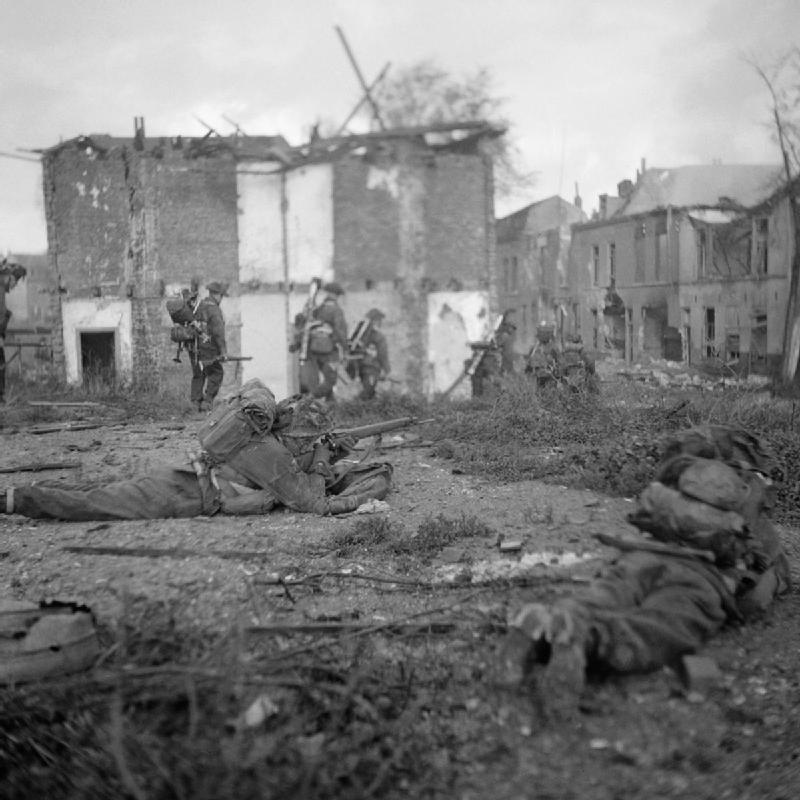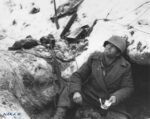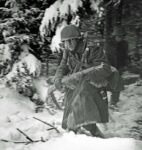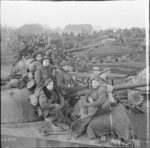The Battle for the Scheldt Estuary
This post is also available in:
 Nederlands
Nederlands
In the final months of 1944, the Allied forces found themselves in dire need of a substantial harbor to efficiently supply their troops. Despite the capture of Antwerp in September, the strategic importance of its ports remained unrealized as German troops controlled the banks of the vital Scheldt Estuary. It was clear: liberation hinged upon the capture of Zeeland.
The battle for the Scheldt Estuary
The plan for opening the estuary comprised four primary operations. Firstly, clearing the area north of Antwerp and closing the South Beveland isthmus. Secondly, clearing the Breskens “pocket” behind the Leopold Canal. Thirdly, reducing the Beveland peninsula. The final phase involved the capture of Walcheren Island.
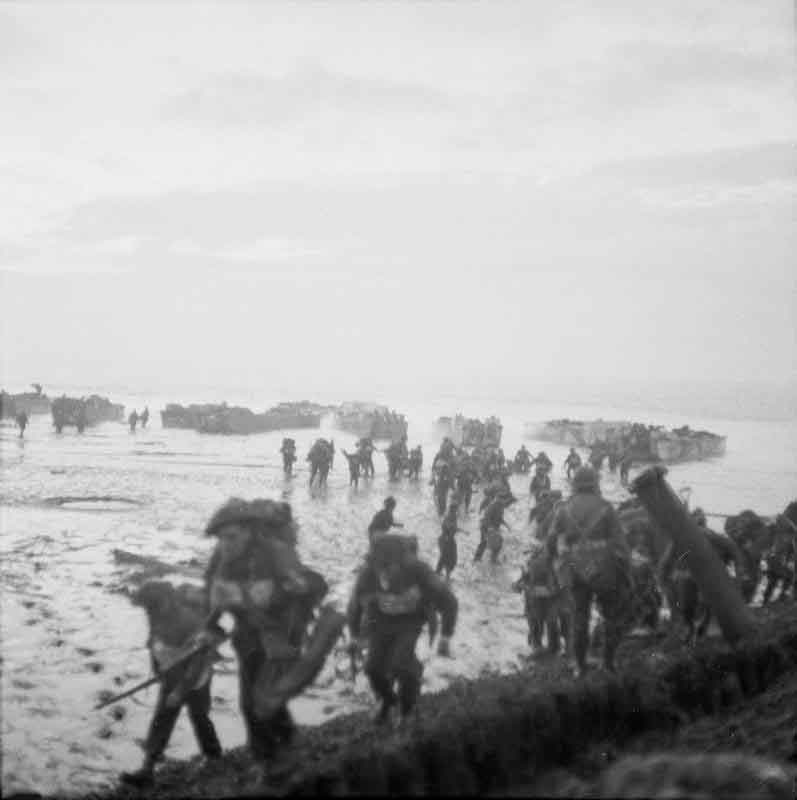
Men of the 4th Special Service Brigade wade ashore from landing craft near Flushing to complete the occupation of Walcheren.
Accordingly, in early October 1944, the 2nd Canadian Infantry Division commenced its northward advance from Antwerp to close the eastern end of the South Beveland isthmus. Despite encountering resistance from enemy paratroopers, they made significant progress until reaching the isthmus itself. The Canadian troops faced heavy casualties while attacking over open, flooded terrain. However, by October 16, they successfully seized Woensdrecht, positioned at the entrance to South Beveland. At this juncture, Field Marshal Montgomery issued orders to regroup all Allied forces, focusing their efforts on opening the Scheldt estuary.
The British Second Army launched a westward attack to clear the Netherlands south of the Maas River and seal off the Scheldt region. Meanwhile, General Simonds focused on the area north of the Beveland isthmus. The 4th Canadian Armoured Division was redeployed north of the Scheldt and pushed vigorously towards Bergen-op-Zoom. By October 24, the isthmus was effectively sealed off, and by October 31, the peninsula had been successfully secured.
Meanwhile, equally intense fighting occurred along the southern shore of the Scheldt. The 3rd Canadian Infantry Division faced determined German resistance as they endeavored to cross the Leopold Canal and clear the Breskens pocket. The attack commenced on October 6 amidst fierce opposition, and for three days, a precarious bridgehead remained under constant threat of elimination. However, on October 9, an amphibious assault succeeded in breaking the enemy hold on the canal, allowing the bridgehead to be reinforced. Troops and tanks crossed the canal, forcing the Germans to retreat into concrete emplacements along the coast. Despite further engagements, by November 3, the south shore of the Scheldt was liberated.
Walcheren
The island of Walcheren posed a significant obstacle to the utilization of the port of Antwerp. Its defenses were formidable, with the only land approach being the long, narrow causeway from South Beveland. Compounding the challenge, the surrounding flats were too waterlogged for movement on foot, yet insufficiently deep for an assault via storm boats. The attack was planned from three directions: across the causeway from the east, across the Scheldt from the south, and from the sea. To weaken the German defenses, the island’s dykes were breached through heavy RAF bombing, causing inundation of the central area and facilitating the use of amphibious vehicles.
On October 31, the Canadians launched an assault on the causeway, and after a fierce struggle, they managed to establish a tenuous foothold. Concurrently, the 52nd British Division pressed forward with waterborne attacks. By November 6, Middleburg, the capital of the island, was captured, and by November 8, all resistance had ceased. The channel was subsequently cleared of mines, and on November 28, the first convoy successfully entered the port of Antwerp.
The battle for the Scheldt Estuary was arduous, marked by heavy casualties and significant devastation to the province of Zeeland. Lives were lost, and the landscape bore the scars of both floods and fierce fighting. Yet, through the perseverance and sacrifice of Allied forces, liberation became a reality.
Battlefield Tours offers comprehensive battlefield tours focusing on the battle for the Scheldt Estuary, tailored for both private and mixed groups in Zeeland and its surrounding areas. Our tours cater to larger groups, schools, and scouting groups, providing specific programs to meet their needs. In Zeeland, we offer tours to various areas around the province, allowing participants to explore key historical sites related to the battle. Due to the distances involved and the length of the tours, motorized transport is required. We can accommodate groups of up to 8 persons with our provided transportation. Alternatively, participants are welcome to follow us in their own vehicles. For groups larger than 8 persons, additional transportation arrangements will need to be made by the participants. Our tours in Zeeland and its surroundings typically last a full day or can be extended to cover multiple days, ensuring a thorough exploration of the region’s significant historical events.
Tour highlights*
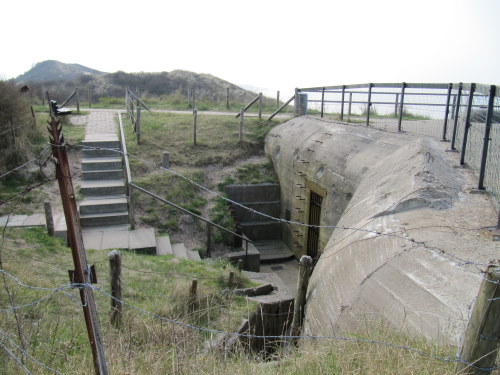
German bunkers Zeeland
- Canadian War Cemetery Adegem
- Canadian War Cemetery Bergen op Zoom
- Leopold canal with Baily Bridge
- For Freedom Museum Knokke Heist
- German bunkers Groede
- Memorial Royal Engineers and Royal Canadian Army Service Corps IJzendijke
- Fighting around the Isabellasluis and Biervliet
- ‘Black Friday’ Woensdrecht
- Battle of the Sloedam
- Liberation Museum Zeeland
- Liberty bridge Westkapelle
- Polderhuis museum Westkapelle
- German bunkers Koudekerke
- Uncle Beach Vlissingen
- Phoenix-caisson Rammekens / Ritthem
*Depends on which tour you choose
Duration
The tours in Zeeland and surroundings takes a full day or several days. Combination with other tours into a multiple day tour is possible.
Possible tour days
Our private tours can be booked all year round and all week to availability.
Price, bookings and payment
Different prices for a private tour may apply depending on group size. Prices, terms and conditions can be found here. You can easily book the tour via the booking form on this page, or by contacting us directly. By submitting a booking you agree to our terms and conditions. After receipt of you booking request we will verify availability on the tour date(s) requested. If needed we will contact you to discuss details or other options. Presuming a requested tour date is possible we will sent you a confirmation email containing an invoice stating the total amount due and the deposit amount (if applicable) needed to complete your booking. Full payment is due 10 days prior to the start date of the tour.
Transport and pick up location
This is a bus tour. We can start the Battlefield Tour from the central train station in Middelburg. If you arrive by plane, you will probably fly to Schiphol, Amsterdam’s airport. The easiest way to get to Middelburg is by train. There is a train from Schiphol to Middelburg, which leaves every hour. You can plan your train trip using the journey planner of the Dutch railways. You should select Schiphol as your departure station and Middelburg as your destination. Overnight accommodation is possible in the province of Zeeland or Middelburg. Book overnight accommodation via this website.
Europe Remembers – Battle of the Scheldt
